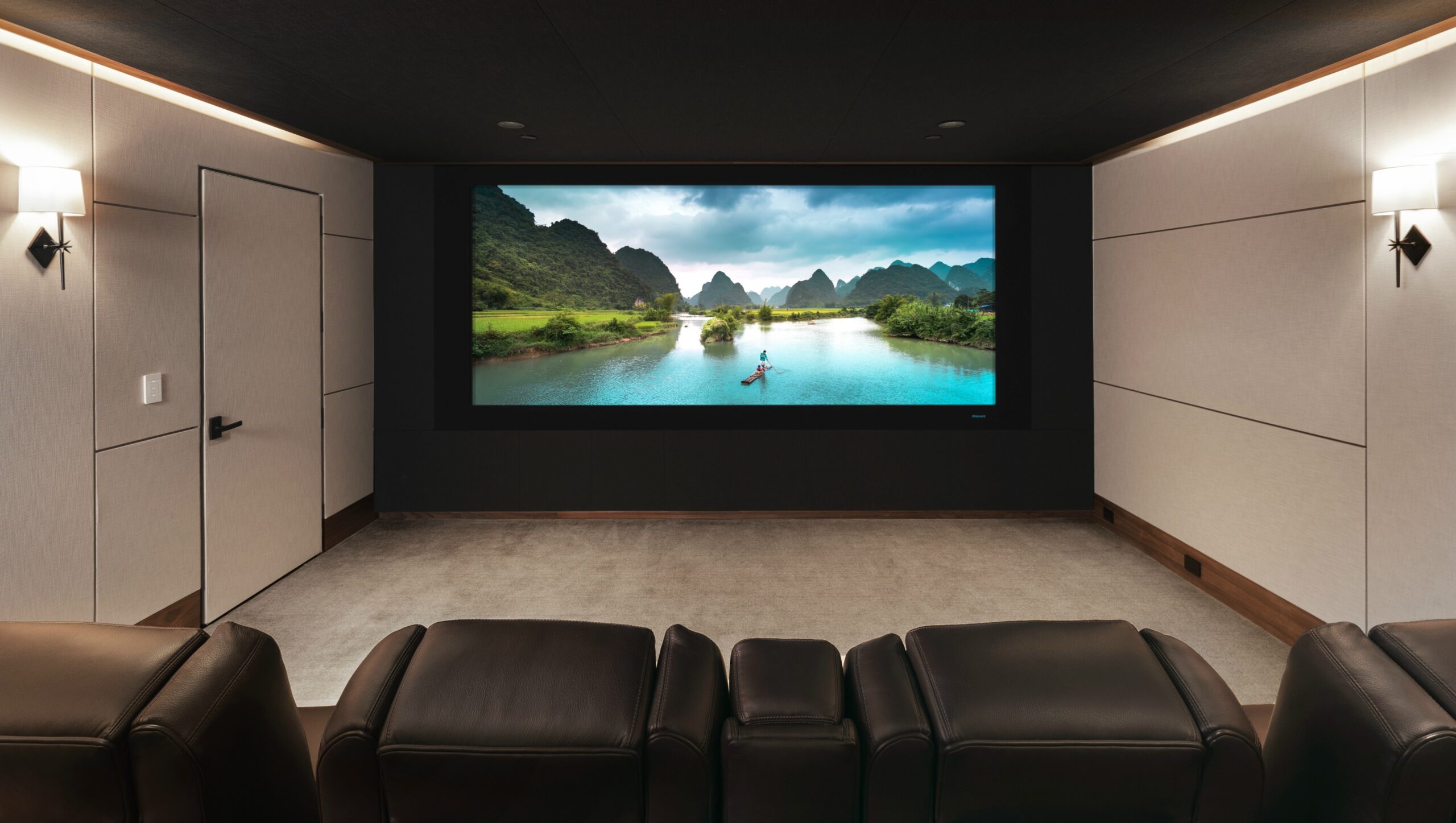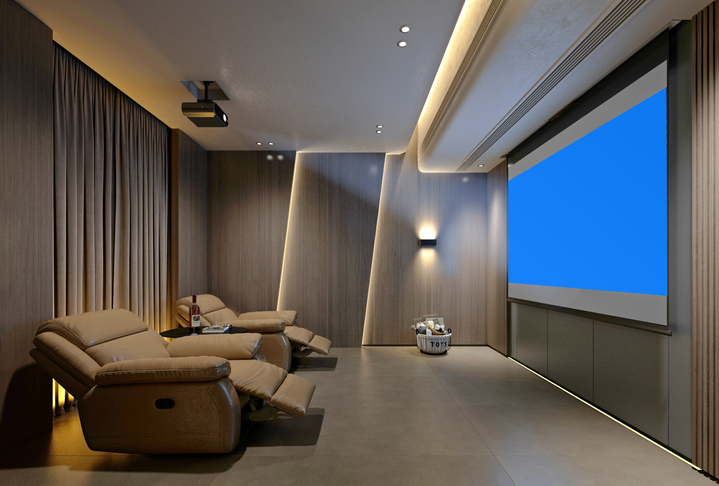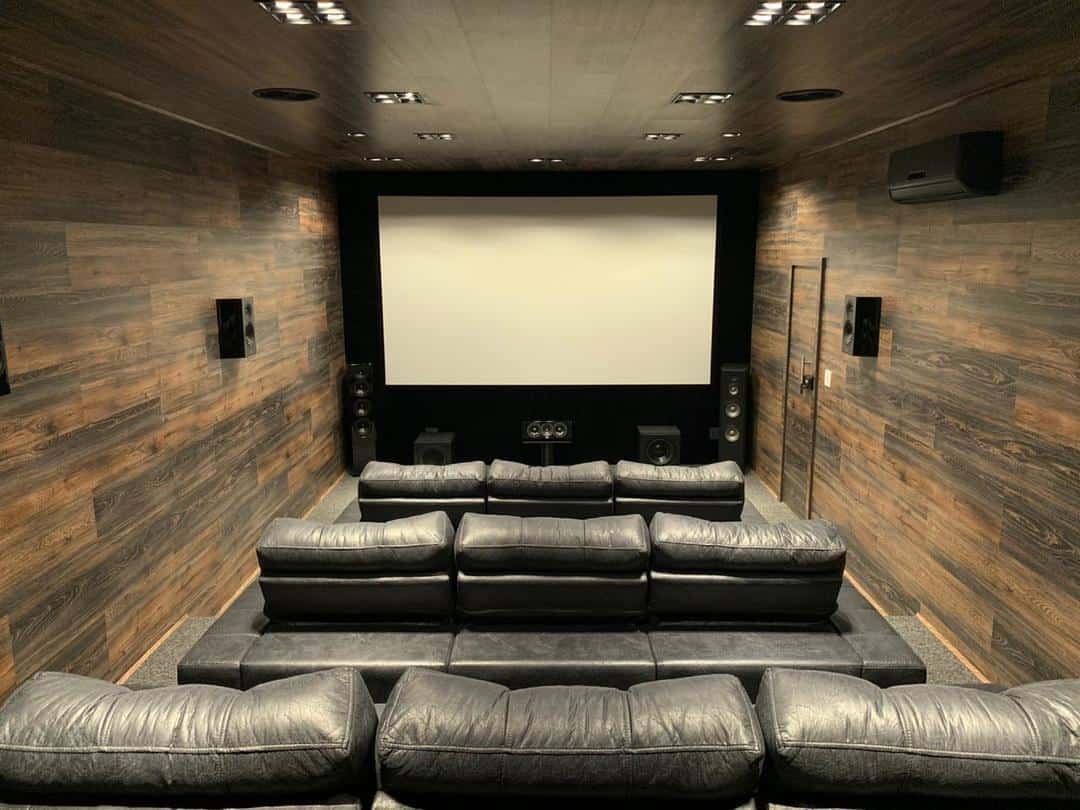Innovative Home Theater Tampa Designs for the Modern Home
Wiki Article
Home Theater 101: Every Little Thing You Need to Know for a Motion Picture Experience at Home
Creating a home theater that matches the cinematic experience of an industrial theatre involves careful factor to consider of numerous elements, including screen option, sound systems, and space design. Whether you are contemplating the optimal screen dimension or the details of border noise, understanding these fundamentals is essential.Choosing the Right Screen
When establishing a home theater, picking the appropriate screen can make or break the viewing experience - tampa home theater installation. The screen acts as the centerpiece of your arrangement, influencing photo top quality, seeing angles, and general aesthetic. Trick aspects to take into consideration include display kind, size, and resolutionFirst, determine the ideal screen dimension based on your area dimensions and seating range. A general standard is to rest around 1.5 to 2.5 times the diagonal screen dimension for ideal watching. Next, select between different screen types, such as fixed-frame, mechanized, or retractable displays, each offering distinct benefits. Fixed-frame displays commonly supply the finest image top quality, while motorized choices permit versatility precede usage.
Resolution is one more essential variable. For an absolutely immersive experience, take into consideration a screen developed for 4K and even 8K content, making certain sharpness and clearness. Furthermore, take into consideration the display's gain, which affects brightness and contrast; a higher gain can boost illumination in well-lit rooms, while a lower gain may be better for darker settings.
Selecting Sound Equipment
Audio tools is an important part of any kind of home cinema system, considerably improving the general watching experience. The choice of audio equipment can figure out the depth, quality, and immersion of sound, critical for creating a cinematic environment.When selecting audio devices, think about a border audio system, which commonly consists of a receiver, multiple speakers, and a subwoofer. A 5.1 or 7.1 network system is advised, where the very first number stands for the audio speakers and the second the subwoofer, offering an immersive soundscape. The receiver is the heart of the system, handling sound and video signals, and should sustain modern-day formats like Dolby Atmos for an enhanced spatial experience.
Quality speakers are vital; look for versions that offer a balanced audio account with great bass reaction. Floor-standing speakers can generate richer noise, while bookshelf alternatives conserve space. In addition, think about wireless options for convenience of setup, although wired systems frequently deliver superior efficiency.

Optimum Seating Plans
Producing a suitable home cinema experience pivots dramatically on optimum seating setups. The setup of seats plays an essential duty in both convenience and checking out quality, directly influencing the general cinematic experience.First, consider the display dimension and seeing range. A typical guideline is to place seats at a range roughly 1.5 to 2.5 times the diagonal dimension of the screen. This ensures an immersive experience without stressing the eyes.
Following, elevation is crucial. The back rows should be greater than the front to prevent obstructions if your seats is in a tiered layout. For flat seats, guarantee that the front row is not too near the screen, which everyone has a clear line of view.
Additionally, think about the arrangement in terms of social dynamics. Team seating can boost the communal experience, while private seats may be liked for individual viewing.

Finally, focus on comfort with ergonomic seating that sustains extended viewing durations. Incorporating recliner chairs or supported seats can considerably boost the experience, making the home theater a favored location for both home entertainment and leisure.
Lighting and Ambiance
Efficient lights and ambiance are vital parts of a well-designed home movie theater, as they dramatically influence the checking out experience. The right illumination can boost the motion picture feel, while inadequate choices can diminish it. For optimal results, view it now think about a split lights strategy that includes ambient, task, and accent lighting.Ambient lights provides basic lighting, ensuring that the area is visite site not completely dark, which can strain the eyes. Dimmer switches are extremely suggested, enabling changes based upon the web content being viewed. Job lighting, such as wall surface sconces or flooring lights, supplies useful lighting for tasks like reading or navigating the space without interrupting the general environment.
Accent illumination can be used to highlight architectural attributes or produce prime focus, including deepness and rate of interest to the space. LED strip lights behind screens or along racks can offer a subtle radiance that improves the aesthetic experience without frustrating the audience.

Wiring and Installation Tips
A well-planned electrical wiring setup is crucial for attaining optimum performance in your home cinema system. Correct circuitry not only ensures top quality sound and video signals however likewise improves the general aesthetic of your area. Begin by mapping out your format, recognizing where each part will certainly be positioned, including your screen, audio speakers, and receiver.When choosing wires, prioritize top quality, appropriately determined wiring to reduce signal loss. HDMI cables must be utilized for video connections, while audio speaker cord should match the specifications of your audio speakers and amplifier. Go with in-wall ranked cables to adhere to security standards and preserve a clean look.
800w.jpg)
Final Thought
In recap, developing a remarkable home cinema experience requires cautious factor to consider of numerous components, including display option, audio devices, seating setups, illumination, and wiring. By prioritizing these variables, a cinematic atmosphere can be effectively reproduced, permitting for immersive seeing experiences that rival standard movie theater setups.Developing a home movie theater that rivals the cinematic experience of an industrial theatre entails careful consideration of numerous parts, consisting of screen selection, sound systems, and area design.When setting up a home cinema, choosing useful reference the ideal screen can make or break the seeing experience. Next, select in between different display kinds, such as fixed-frame, mechanized, or retracting displays, each offering unique advantages. For a genuinely immersive experience, take into consideration a display developed for 4K or even 8K web content, making sure sharpness and clarity.In recap, producing a phenomenal home cinema experience needs cautious consideration of different elements, including screen choice, audio devices, seating arrangements, lights, and wiring.
Report this wiki page